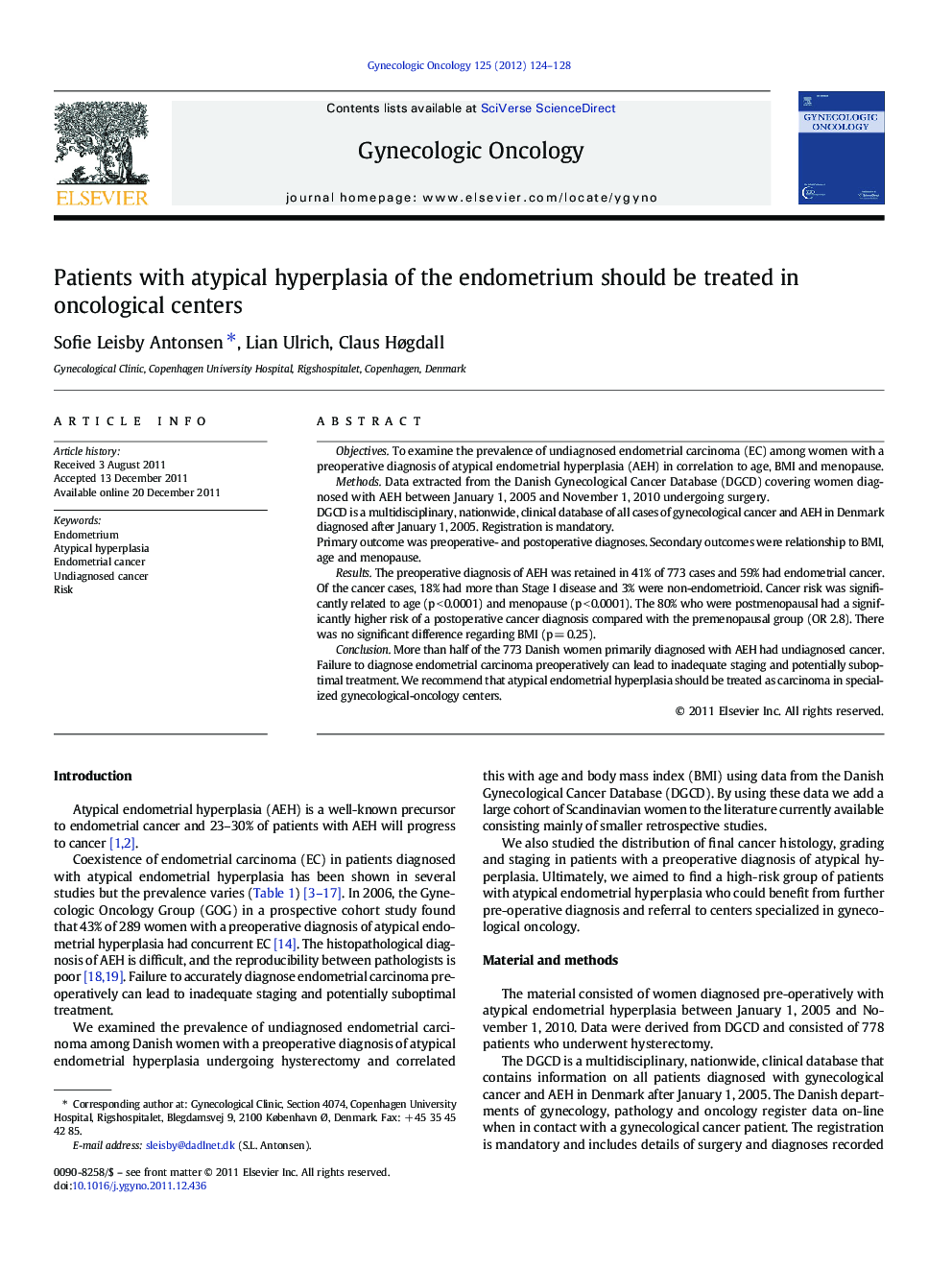| Article ID | Journal | Published Year | Pages | File Type |
|---|---|---|---|---|
| 3945257 | Gynecologic Oncology | 2012 | 5 Pages |
ObjectivesTo examine the prevalence of undiagnosed endometrial carcinoma (EC) among women with a preoperative diagnosis of atypical endometrial hyperplasia (AEH) in correlation to age, BMI and menopause.MethodsData extracted from the Danish Gynecological Cancer Database (DGCD) covering women diagnosed with AEH between January 1, 2005 and November 1, 2010 undergoing surgery.DGCD is a multidisciplinary, nationwide, clinical database of all cases of gynecological cancer and AEH in Denmark diagnosed after January 1, 2005. Registration is mandatory.Primary outcome was preoperative- and postoperative diagnoses. Secondary outcomes were relationship to BMI, age and menopause.ResultsThe preoperative diagnosis of AEH was retained in 41% of 773 cases and 59% had endometrial cancer. Of the cancer cases, 18% had more than Stage I disease and 3% were non-endometrioid. Cancer risk was significantly related to age (p < 0.0001) and menopause (p < 0.0001). The 80% who were postmenopausal had a significantly higher risk of a postoperative cancer diagnosis compared with the premenopausal group (OR 2.8). There was no significant difference regarding BMI (p = 0.25).ConclusionMore than half of the 773 Danish women primarily diagnosed with AEH had undiagnosed cancer. Failure to diagnose endometrial carcinoma preoperatively can lead to inadequate staging and potentially suboptimal treatment. We recommend that atypical endometrial hyperplasia should be treated as carcinoma in specialized gynecological-oncology centers.
► The risk of undiagnosed cancer (EC) in atypical hyperplasia (AEH) is high: 59%. ► The risk of undiagnosed EC in AEH is related to age and menopause but not to BMI. ► More than one third of cancers required full staging surgery including lymphadenectomy why centralized treatment of AEH should be considered.
